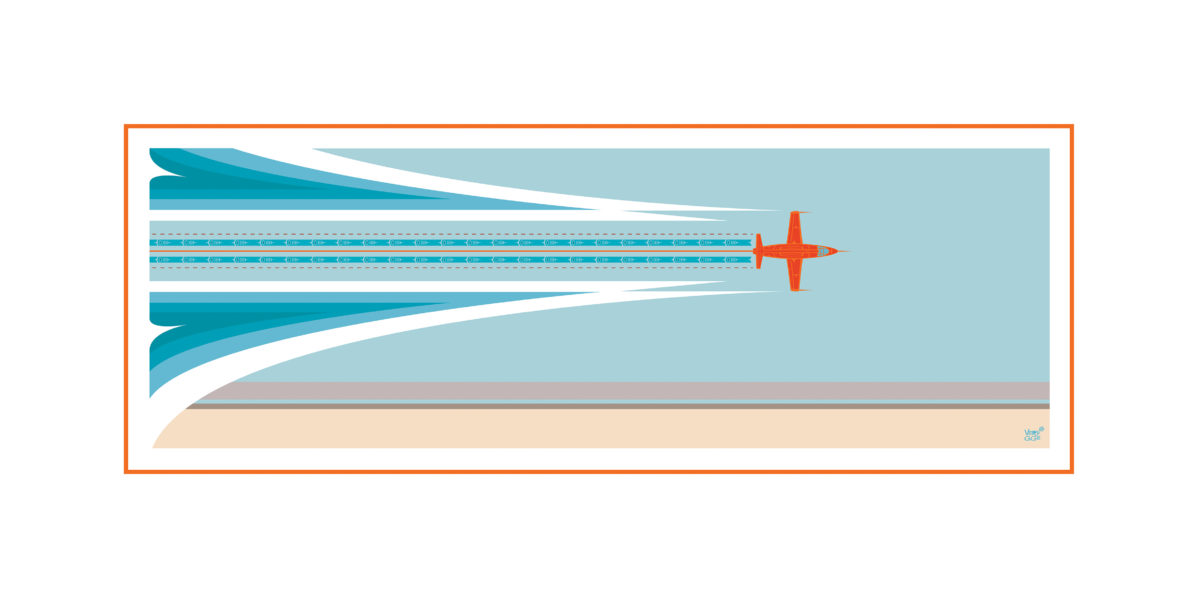Glamorous (Breaking the Sound Barrier)
EXHIBITION:
Jeffrey Veregge: A Better TomorrowIn 1935, a simplified explanation of the challenges of supersonic flight led to the creation of the term “sound barrier,” which seemed to imply a physical wall that could not be overcome. Bullets and cannon balls had exceeded the speed of sound for hundreds of years, but the question loomed as to whether or not a plane — or a man — could withstand the pressures that accompanied it. The U.S. Air Force set out to answer this looming question.
On 14 October 1947, just under a month after the United States Air Force had been created as a separate service, tests culminated in the first manned supersonic flight, piloted by Air Force Captain Charles “Chuck” Yeager in aircraft #46-062, which he had christened Glamorous Glennis, named for his wife.
Two days before his historic flight, Yeager was thrown from a horse while riding with his wife and broke two ribs. Knowing that he would never be allowed to fly, he traveled to a doctor off base and had them taped up. Unable to close and latch the side door by hand, he utilized a broom handle at the suggestion of a fellow pilot.
On Oct. 14, 1947, Yeager and the X-1 were dropped from the B-29, and quickly accelerated away. When the controls locked up, he successfully used the horizontal stabilizer to keep the plane stable at an altitude of 43,000 feet (13,000 meters). As the plane accelerated to a speed of 700 mph (1,127 km/h), or Mach 1.06, controllers on the ground heard the first sonic boom. (The end of a bullwhip moves faster than the speed of sound. Some say the “crack” is a small sonic boom.)
After exceeding the speed of sound, the buffeting decreased, creating a smooth short flight. The plane remained supersonic for approximately 20 seconds before Yeager turned off two of the four engines and slowly decelerated.
-Text from the space.com article “Breaking the Sound Barrier | The Greatest Moments in Flight”

